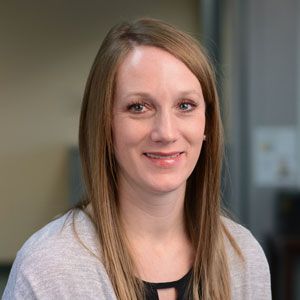In June of 2021, we published the report Student-Centered Learning in Michigan K-12 Schools: Factors That Impact Successful Implementation. This study aimed to capture the ways in which Michigan schools are implementing student-centered learning practices along with the factors that impact the successful implementation of such practices.
To inform the report, we interviewed teachers and both building- and district-level administrators from five Michigan school districts: Berrien Springs Public Schools, Hamilton Community Schools, Oxford Community Schools, Portland Public Schools, and the Public Schools of Calumet, Laurium, & Keweenaw. These school districts belong to a larger network of districts that are early adopters of student-centered learning called the Michigan CoOp (MiCoOp), which is led by Lisa Sitkins.
This mini-series Student-Centered Learning in Michigan K-12 Schools—which is part of our larger student-centered learning blog series—is meant to accompany the report and further explore the practical implications of the research.
In addition, the mini-series celebrates these schools as well as other K-12 schools throughout the state of Michigan who continue to work toward implementing student-centered learning models that include elements of digital learning, personalization, and competency-based learning progressions.
In our discussions with teachers and school leaders as part of this study, we learned about many different ways in which teachers are monitoring student needs and progress. Because of the COVID-19 pandemic and the resulting trauma it has caused, this has never been more relevant or more important.
The COVID-19 pandemic brought to the surface many issues students face: Lack of reliable WiFi, lack of access to technology, food insecurities, and the lack of parental support at home to name a few.
As schools shut their doors and students logged onto Zoom with their cameras on (at least that was the goal) to continue learning remotely, teachers got a glimpse into students’ home lives—a glimpse that they never had before.
Some teachers may never have realized the issues students were facing outside of their classroom. When students’ basic needs aren’t being met or they are experiencing trauma, it often results in academic struggles.
Joel Asiala, a principal with the Public Schools of Calumet, Laurium, and Keweenaw, stressed: “If you don’t know what is going on with kids behind the scenes, you won’t be successful in teaching them. We need to understand kids and what they are dealing with personally in order to reach them academically.”
Monitoring students’ non-academic needs in addition to their academic needs can help us truly consider the whole child.

“If you don’t know what is going on with kids behind the scenes, you won’t be successful in teaching them. We need to understand kids and what they are dealing with personally in order to reach them academically.”
Monitoring both academic and non-academic student needs
One of the four core tenets of a student-centered learning environment is the continuous monitoring of student needs—both academic and non-academic.
Monitoring students’ academic needs based on their performance data can help teachers determine where students are excelling and where they have gaps in their learning.
Based on performance data from formative and summative assessments, learning experiences should be adjusted to appropriately shape students’ learning pathways. Some students may be ready to move on while others may need extra time and more individual or small group instruction.
However, in a student-centered learning environment, putting students at the center means really getting to know them beyond just academics—it means understanding their interests, their passions, and what truly matters to them. These are considered non-academic needs.
Understanding a student’s non-academic needs can help teachers connect the academic curricular pieces together in ways that work best for each individual learner.
Learning can be geared towards their interests or passions. For example, if a student is interested in a particular career path or subject area, their schedule can be designed to include specific courses that are related to that field of study.
When learning is geared towards students’ interests or passions, learning becomes more meaningful and can result in increased student engagement.

Understanding a student’s non-academic needs can help teachers connect the academic curricular pieces together in ways that work best for each individual learner.
What does it look like in Michigan K-12 schools?
Teachers and school leaders in Michigan are monitoring their students’ needs in many different ways.
Learner profiles are one of the ways in which teachers are getting to know students and their individual needs as learners. Oxford’s Anita Qonja-Collins shared that through learner profiles, they are “helping students understand themselves and the choices they have in their education.”
Beyond the obvious benefit of a teacher understanding their individual students’ academic and non-academic needs, learner profiles can also help students to know themselves as learners.
Advisory periods are another way for teachers to track both the academic and non-academic needs of their students. At Portland High School, each day begins with a 25-minute advisory period called “cadre.” Cadre teachers are responsible for monitoring a group of approximately 20–25 students’ progress.
“Those are the kids that you take care of,” explained Portland High School principal Jamie DeWitt. “You check in on them, find out how they are doing. You make sure that they’re okay.” It’s a time for conversations, a time for teachers to connect with the students they are most worried about, and a time to build and maintain relationships.

“Those are the kids that you take care of. You check in on them, find out how they are doing. You make sure that they’re okay.”
Tracking student achievement or performance data with a student information system (SIS) and/or a learning management system (LMS) is a way that many districts monitor and track student needs and progress.
Executive director of Link Learning for Berrien Springs Public Schools Kristi Teall described the “Pulse” data dashboard that they use throughout the district to track student progress and identify trends of student engagement.
“This was probably our first step in becoming student-centered,” said Teall. “It is about looking at data to see what is going on with kids, trying to find out why some are or are not successful, and determining what might we do to address some of those challenges that our students are facing.”
When we can effectively monitor students’ individual academic needs, we can also teach students to monitor their own needs.
By tracking their own academic progress, students are encouraged to take ownership of their learning, which helps them to develop the skills needed for learner agency—knowledge of oneself as a learner. It is the learner’s ability to articulate, create, or ask for the conditions necessary to meet one’s learning needs.
Monitoring their own academic progress is an important life skill for students. It fosters metacognition (awareness of one’s own thought processes), which has been associated with higher levels of achievement.
It is important to remember that while students should have opportunities to track their own progress, we can’t assume that students know how to do this themselves. Monitoring student data should be a collaborative process with both students and teachers looking at the same data and discussing it together.
Portland teacher Chandra Polasek shared how, in her high school English Language Arts and Communications classes, she has quarterly grade conferences with her students. She described the conferences as collaborative conversations in which students articulate how they have met specific standards.
“I got tired of grades being assigned simply based on what I’ve recorded, whereas students might have evidence that shows they’re really proficient in the standard…it might have been that I just didn’t see it or wasn’t grading a particular assignment for it at the time,” Polasek admitted.
There’s also a self-reflection aspect to these grade conferences. She encourages her students to determine where they excelled in each unit and what they want to and need to work on next. The conversations that take place during these quarterly grade conferences help students to develop learner agency as they monitor their own progress and learning needs.
Learning that is student-centered in this way can help students develop both academic and non-academic skills transferable beyond the classroom.

“I got tired of grades being assigned simply based on what I’ve recorded, whereas students might have evidence that shows they’re really proficient in the standard…it might have been that I just didn’t see it or wasn’t grading a particular assignment for it at the time.”
Final thoughts
Part of being a teacher is monitoring the needs of students, whether a classroom is student-centered or not. Every teacher does it in some way or another—exit tickets, thumbs up/thumbs down checks, individual student conferences, analyzing student assessment data, or listening to students explain something in their own words.
In a face-to-face classroom, teachers can visually scan the class using social cues and students’ facial expressions to get a general idea as to how many students seem confused, frustrated, or lost.
In a virtual classroom, those visual cues don’t exist. Many teachers found it to be more challenging to monitor the needs of their students during the pandemic when they were forced to teach remotely and may not have had much, if any, experience teaching online.
During this time, we were reminded of the importance of paying attention to more than just how students are doing academically by focusing on students’ social and emotional needs.
In classrooms that are student-centered (virtual or face-to-face), teachers monitor student needs more intentionally—and it’s more than just data. It is about understanding the whole child—what they need both academically and non-academically—and giving students the skills they need for success within and beyond the classroom.
Student-centered learning blog series
In our Student-Centered Learning blog series, we lead a discussion about student-centered learning: what it is, how it can help students and schools, and how to make it a reality. Our hope with this series is to provide practical insights to school leaders, teachers, and parents on how to make education more meaningful to students. Stay up to date on future blogs in this series by signing up for email notifications!

